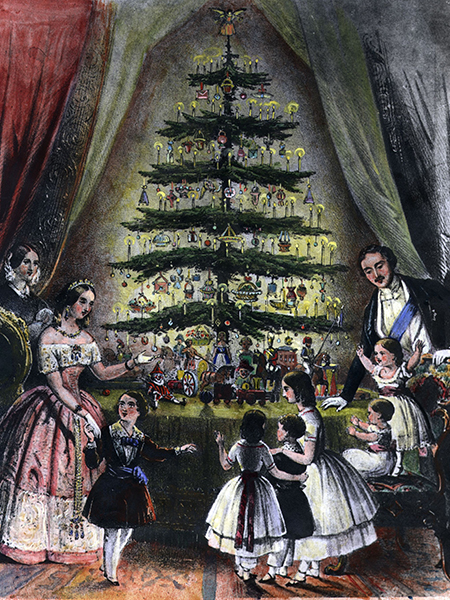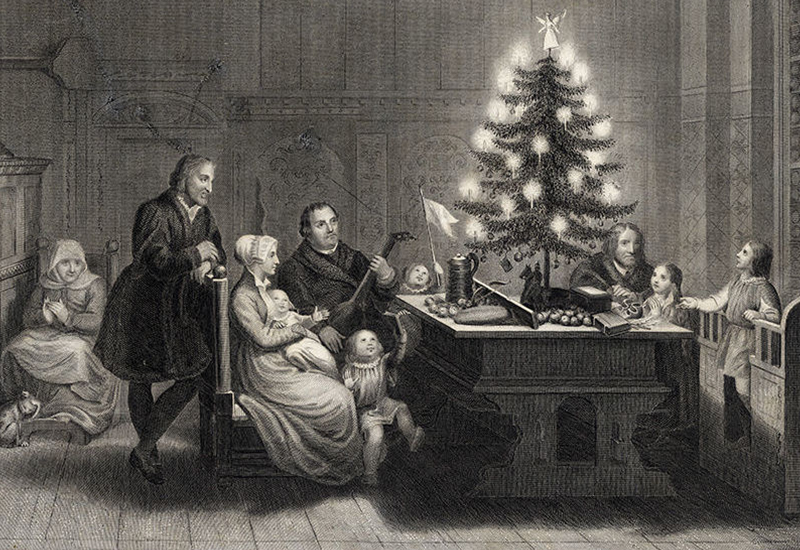The traditional act of bringing an evergreen into the home at Christmas and decorating it is actually a rite that can be dated back many centuries. It is claimed that in c. 723, the English missionary St. Boniface encountered pagans in Germany preparing a sacrifice at an oak tree dedicated to the god Thor. Legend has it that when St. Boniface took an axe to the tree and was not struck down by the pagan god, he claimed that the evergreen was a “holy tree”, and the Christian faith claimed it.
Over time, evergreens became part of Christian rites in Germany and later became known in the Middle Ages as “paradise trees”. Soon, the evergreen came to represent the Garden of Eden, often decorated with apples and displayed in homes on the feast day of Adam and Eve. What is now Christmas Eve, 24 December, was set aside for several centuries as their feast day and was often celebrated with a paradise play, which told the story of humankind from the creation of Adam and Eve and the Garden of Eden up to the birth of the Messiah in Bethlehem.
It was the theologian Martin Luther who later added ornaments and candles in the 16th century, thus creating the decorated Christmas tree that many of us put up each year. Now the Christmas tree fills our homes with festive joy – its triangular shape representing the Holy Trinity: the Father, Son and the Holy Spirit.

In more modern times, it was Queen Victoria’s great-grandmother, the German-born Queen Charlotte, who unveiled the first Christmas tree in Britain during a party which was held for local children in 1800. After Victoria’s marriage to her German cousin Prince Albert in 1840, the Christmas tree became widespread across Britain. In fact, Albert was the first to import spruce and fir trees to Britain from Coburg in Germany.
This one-time pagan tradition eventually made its way to Portugal when the German-born Dom Fernando II, husband of Queen Maria II, brought the first royal Christmas tree to the hall of the majestic Pena Palace in Sintra during the late 19th century.
Known as the “artist-king”, Dom Fernando is credited as the man who influenced the Christmas tree in Portugal, although it possibly wasn’t the first one in the country. Others say the first Christmas tree may have been raised in Porto at the old Crystal Palace during the international exhibition in 1865, the first exhibition of its kind on the Iberian Peninsula.
Main image: Steel engraving of Martin Luther’s Christmas Tree, from Sartain’s Magazine, circa 1860 © J. Bannister, Public domain, via Wikimedia Commons













